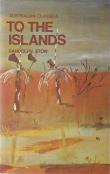Notes:
Additional epigraph for the revised edition: Still islands, islands, islands. After leaving Cape Bougainville we passed at least 500, of every shape, size, and appearance.... Infinitely varied as these islands are - wild and picturesque, grand sometimes almost to sublimity - there is about them all an air of dreariness and gloom. No sign of life appears on their surface; scarcely even a sea bird hovers on their shores. They seem abandoned by nature to complete and everlasting desolation. Jefferson Stow: Voyage of the Forlorn Hope, 1865.
Notes:
Author's Preface to the revised edition: To the Islands was first published in 1958, and completed not long after I had passed my twenty-second birthday. Understandably, it contains many faults, due partly to immaturity, but more to the fact that my technical competence was not equal to my ambition, which in retrospect makes me realise how horizons narrow in middle age. In reissuing it in this very slightly abridged version, I am conscious that it still asks for the tolerance which most reviewers were kind enough to show when it was new ... Nowadays I should hardly dare to tackle such a King Lear-like theme; but I do not regret having raised the large questions asked here, and so wisely left unanswered. If the novel retains any interest, other than as an historical-sociological document, it may be because this story of an old man is really about a certain stage in the life of a sort of young man who has always been with us , and always will be.... In the original edition I was consciously making propaganda on behalf of Christian mission-stations for Aborigines, in particular for one Mission on which I had worked for a short-time, and which seemed in danger of closing down. ... For that reason there was in the novel a good deal of talk by the white characters' (vii-ix).
 4501485921544763673.jpg
4501485921544763673.jpg
 7714490771422074299.jpeg
7714490771422074299.jpeg
 Text Classics
Text Publishing
(publisher),
Melbourne
:
Text Publishing
,
2012-
Z1851461
2012
series - publisher
novel
'Great books by great Australian storytellers.' (Text website.)
Text Classics
Text Publishing
(publisher),
Melbourne
:
Text Publishing
,
2012-
Z1851461
2012
series - publisher
novel
'Great books by great Australian storytellers.' (Text website.)
 8782447388503232726.jpg
8782447388503232726.jpg
 6853932490013454770.jpg
6853932490013454770.jpg
 9197543063258541837.jpg
9197543063258541837.jpg